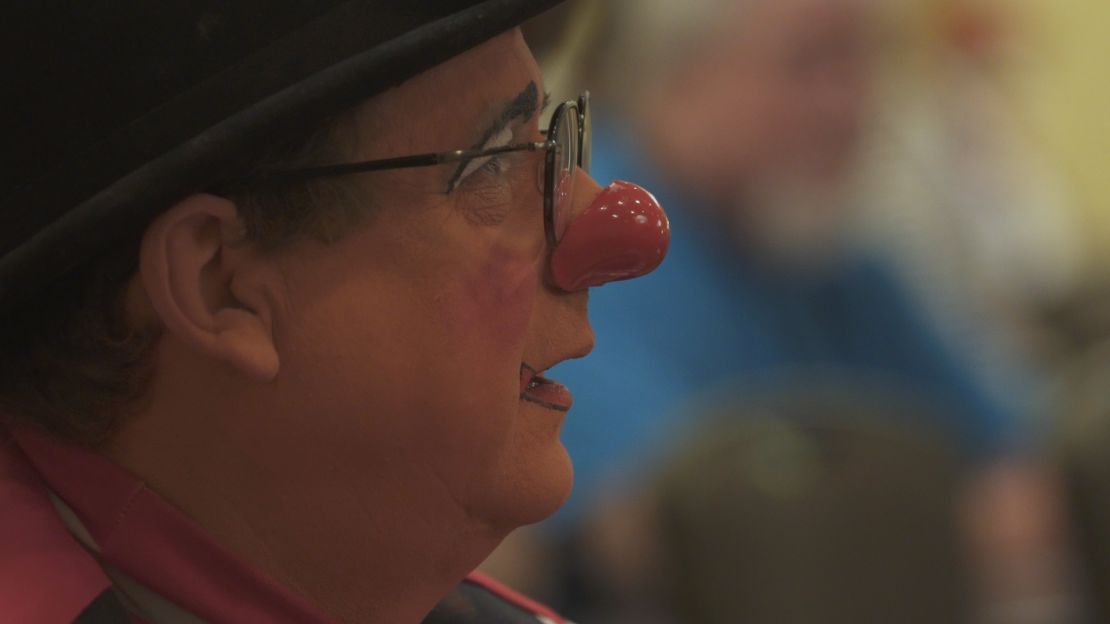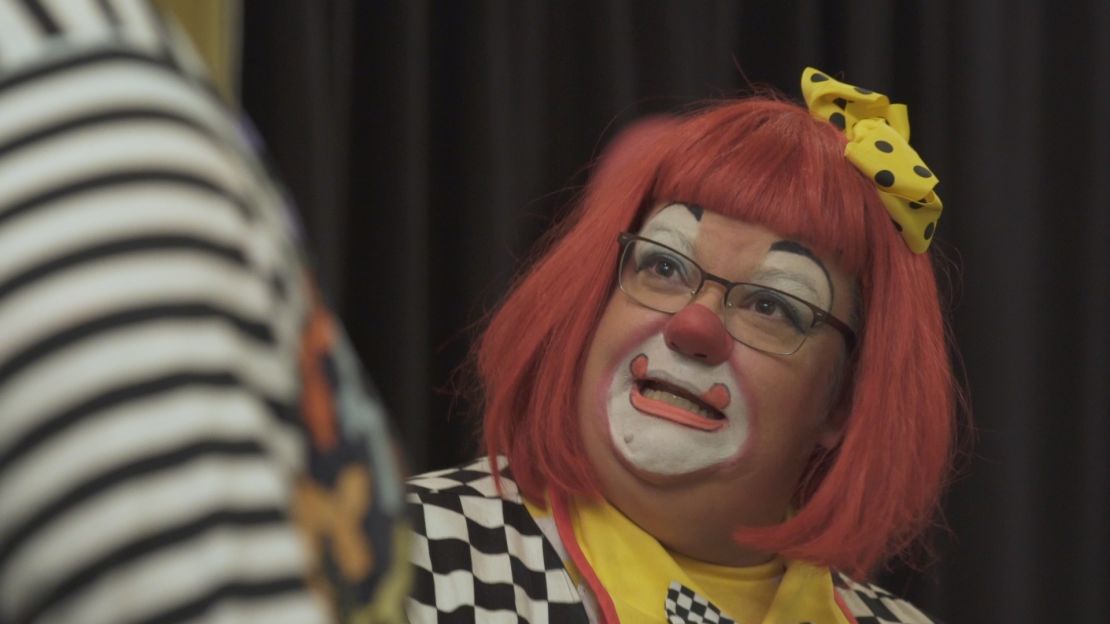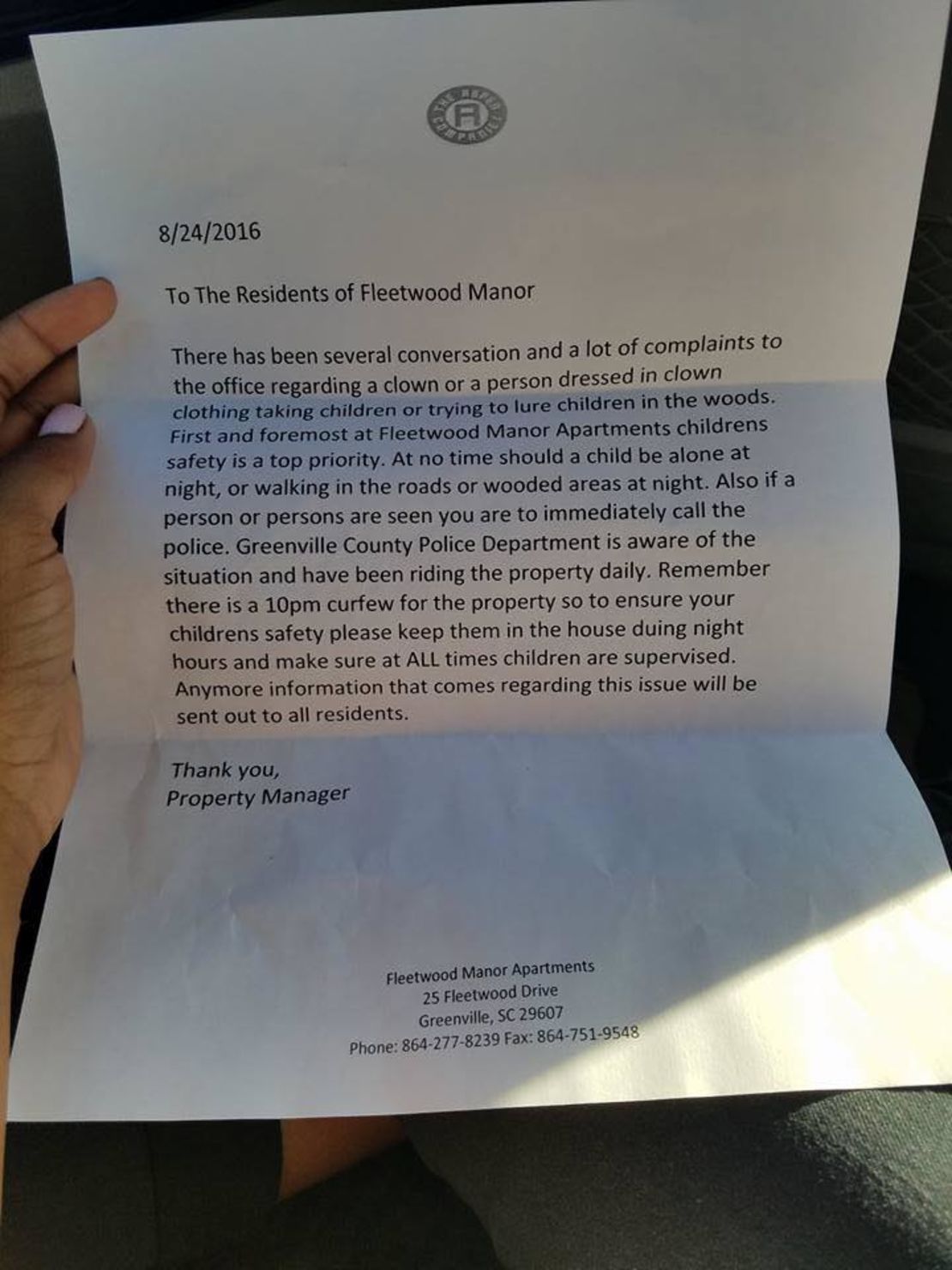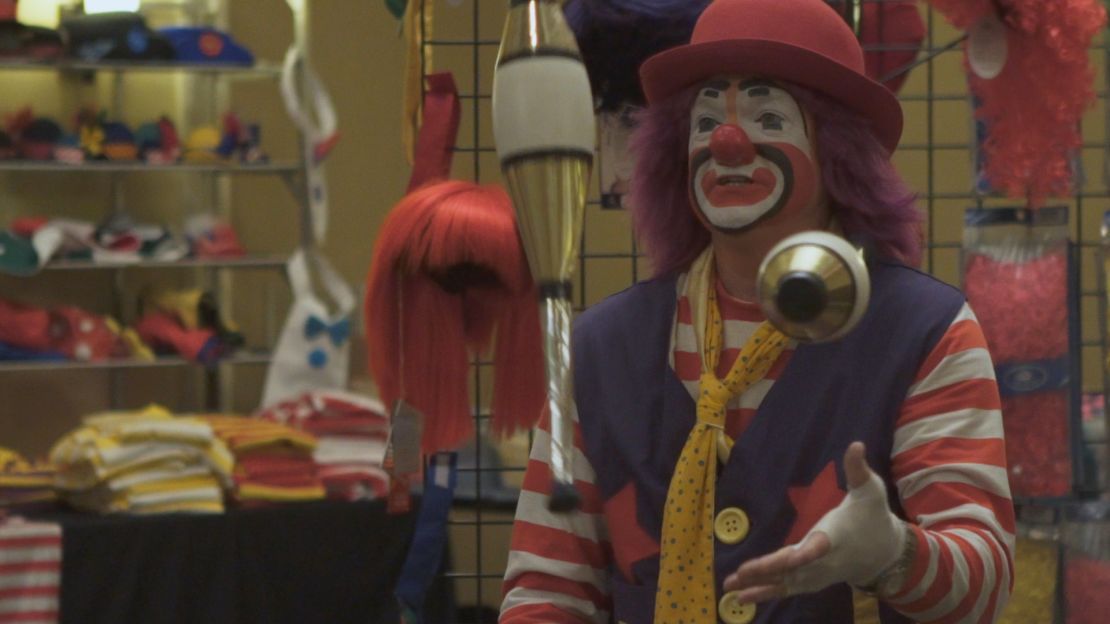Story highlights
The first rule of clowning: Never scare the audience
Clowns say they live by a code
Wearing a comically puffy blue dress, twisted pigtails, a big red schnozz and a mischievous grin bracketed with crimson greasepaint, Blondi the Clown bounds into the room clanging pots and pans, a monsoon of nervous energy in the guise of a little girl.
She greets the audience with a piercing, helium-voiced “Hello,” getting up close and personal with the people in the front row. Several recoil while she assaults their senses with manic giggles and gestures.
Then, Blondi pauses, takes a step back and softens her voice. She explains that her not-so-grand entrance was an object lesson in why clowns can make kids sob and grownups cower.
The first rule of clowning, Blondi says, is never scare the audience. No jumping out at children. Squirt flowers, seltzer spray and hand buzzers are not funny unless the target is a fellow clown. Reapply face paint, particularly on hot days, to avoid the Salvador Dali look.
Blondi, aka Teresa Gretton, is teaching a workshop called Approachability at the South East Clown Association convention in Altamonte Springs, Florida.
Her class is timely, as people have been spooked over the last few weeks by reports of suspicious characters in clown costume approaching kids in North and South Carolina, as well as Georgia and West Virginia.
Whether the stories of costumed miscreants are fact or fiction, the hysteria is creating a serious PR problem for those who earn a living delivering pratfalls and punchlines in curly wigs and floppy shoes.
Clown sightings: Creepy menace or unfunny hoax?
Unfunny stereotypes
The clown community has dealt with its share of negative stereotypes dating back more than three decades.
In 1986, the Stephen King novel “It” introduced a murderous funnyman named Pennywise. Before that, the serial killer John Wayne Gacy was infamous for his alter ego, Pogo the Clown.
The media has developed a predilection to pounce on reports of clowns behaving badly, while movies like “The Devil’s Rejects” and comic books like “A Cotton Candy Autopsy” presented children’s jokesters as secret hellions.
The fear of clowns is called coulrophobia.
The prevalence of coulrophobia isn’t known but a 2014 Rasmussen Reports survey of 1,000 American adults indicated that 43% of respondents don’t like circus clowns. There’s a whole community of red-nosed performers, however, who aren’t affiliated with circuses, from ministry clowns to rodeo clowns.
The art of clowning
The whole point of events like SECA is to help aspiring clowns hone their slapstick skills, refine their characters and most importantly, develop the ability to modulate their act based on crowd response.

“The psyche of a clown is important because you’ve got to be able to read people,” said Gretton, of Waldorf, Maryland. “You’ve got to give space and respect space. If someone seems uncomfortable, I take a step back but I don’t ignore them.
“People are scared of clowns because maybe they had an experience with a clown running into a room and making a lot of noise and getting up in their face and they were overwhelmed and those feelings don’t leave. It takes a while to repair that. That’s why clowns should work up to a crescendo instead of hitting them hard in the beginning.”
Separating the bad apples
SECA drew dozens of face-paint devotees to a suburban business hotel outside Orlando.
A corporate meeting room was transformed into a red nose district, lined with kaleidoscope costumes, neon wigs, kazoos and magic tricks. Experts taught workshops in balloon twisting, puppetry and airbrush art.

The convention, which culminated with a disco-themed banquet, was an exuberant retort to recent news portrayals of clowns as boogeymen.
“We are professionals who put a great deal of time, effort and energy into the craft,” said Monica Chaney, aka SonShyne the Clown, a mother from Kernersville, North Carolina, who sells clown supplies online and capers with her husband, Rick, aka Jots A. Clown. “Anybody that’s preying on kids, we don’t want any part of that.”
Decked out in oversized green and orange funnywoman finery, replete with a tiny top hat and giant bow tie, Chaney said the stories about suspicious people in big top regalia are tarnishing the reputations of hard-working children’s comics. Earlier this month, a South Carolina police chief said officers would detain anyone spotted in a clown suit.
Copycat culprits
The trouble started when residents of a South Carolina apartment complex began telling their landlord that loiterers with blinking noses and big shoes were lurking in the woods near the building, flashing laser lights, offering money to kids and traipsing into the dumpster area late at night. No clown arrests have been made and police determined that at least one of the sightings was falsely reported.

Just as things began to calm down in South Carolina, more clusters of clown sightings were reported in neighboring North Carolina, leading to one incident in which a would-be vigilante claimed he grabbed a machete and chased a rogue funnyman.
This week, Georgia is coping with its own scare, as police in three towns are investigating separate clown sightings.
In one report, a motorist allegedly got into a minor car accident swerving to avoid hitting a clown in the road. No one has been injured in the series of incidents, which may be spreading due to copycat culprits. The descriptions of the perpetrators vary, some supposedly wear masks while others go with white face paint.
“There’s always been a few freaky people out there who do strange things dressed as clowns,” said Rick Chaney, aka Jots, the grandson of actor Lon Chaney Jr. (“The Wolf Man”) and son of Earl “Mr. Clown” Chaney.
“Whoever is out there in North Carolina or South Carolina is just trying to get attention and it’s snowballed into something where clowns are getting battered,” said Chaney. “It’s no different than the battering of the two presidential candidates. Both candidates are going to move on and people will forget all this stuff. I think the same thing will happen with clowns.”
It comes from the heart
Clowns are driven by a generosity of spirit and deep reserves of compassion, said Glenn Kohlberger, aka Clyde D. Scope, aka Philip D. Beaker, a SECA organizer and former president of Clowns of America International.

Many clowns volunteer in children’s hospitals and nursing homes. First and foremost, clowns are earnest, which makes them easy targets for ridicule and stereotyping, said Kohlberger. He’s particularly irked by news reports that identify the lurkers in the South as clowns, when it’s likely the culprits are pranksters in disguise, not actual trained entertainers.
“Clowning comes from the heart,” said Kohlberger. “We lead with our hearts so of course we’re going to feel hurt when we see scary clowns on TV or read about imposters putting on makeup and running around trying to make people upset.
“These people are what we call ‘Lipstick Clowns’ – people off the street who buy a costume in a store and get their jollies by freaking people out.”
Eric Worthington, a Florida college student who doubles as a balloon twister named Yo-yo Stitch, said clowns live by a code and follow certain fundamental rules for everyone’s safety.
The clown commandments
Clowns of America International has a list of Eight Clown Commandments that outlines the parameters of professional conduct for performers.
“Real clowns don’t walk around in the dark,” said Worthington. “We stay in well-lit areas. We know our boundaries and our whole goal is to show the world that we’re fun-loving clowns.
“We realize that kids can be scared because they see the horror movies, but once they meet us and see we’re nice then it’s not a problem. What’s happening now is that parents are scared and that’s a real problem.”
Clowns make fun of themselves, not the people in the audience, said Teresa Gretton’s husband, Bob, aka Bunky the Clown.
“People are afraid that a clown is going to throw a pie at them or squirt water on them but that’s not what we’re about,” said Gretton, co-founder of a clown disaster relief organization, Red Nose Response.
“Once, we were doing a school show and a kindergarten girl came up to me and said, ‘Bunky, you are stupid. You don’t know your numbers. You don’t know your colors.’ She thought I was dumb as a rock. That was the greatest compliment I’d received in my life.”

